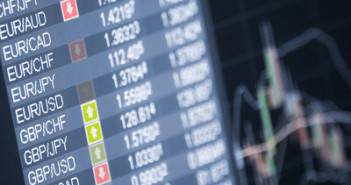Fresh off the biggest IPO in history, equity markets have begun the new trading week in lethargic fashion, having a hard time building any momentum off the record setting capital raise from Alibaba on Friday.  With a light economic calendar on Monday, focus of market participants has been on headlines from central bank policy makers, along with position squaring ahead ofTuesday which is chalked full of PMI releases and should give a good indication of how global growth is faring.
The parabolic rise of USDJPY as of late has raised concern for some in Japan, with former deputy Governor of the Bank of Japan speaking out overnight, advising that the sharp depreciation of the Yen could put the region at risk of recession.  We had previously cautioned the recovery of the Japanese economy would have to be complemented by structural reform in energy markets (along with a more robust “third-arrow†from Abe), and the steady weakening of the Yen would not be a panacea for export growth to lift the country onto a stable glide trajectory.  Former deputy Governor Iwata opined that USDJPY between 90 and 100 reflected fundamentals, which also correlates with a recent survey that that found many corporations in Japan don’t see a large benefit in a weaker Yen.  USDJPY has consolidated around the 109 handle this morning, taking a breather as markets digest the overnight developments.  At this point it seems as if the rally in the pair could be nearing an end point, though watch for yields in the US to drive price action absent of any jawboning from Japanese policy makers.
Sticking with the theme of jawboning from central bankers, the Euro has managed to find a slight bid-tone to begin the new week, propped up by comments from ECB governing council members speaking in Australia over the weekend.  Specifically, ECB member Visco (head of Italy’s central bank) said that the response in the Euro from the policy measures taken between June and September was essentially the right reaction, and that there doesn’t necessarily need to be further stimulus steps.  The issue that policy makers in the monetary union are struggling with is that the record-low borrowing costs and ABS purchases from the central bank has lessened the urgency of structural reforms for countries with large debt burdens, though at the moment easy monetary policy is the lesser of two evils as it has become evident a hard line approach of strict austerity would potentially threaten the existence of the monetary union itself.  While the divergence in central bank policy between the Fed and ECB is dollar bullish in the medium term – we feel there is potential to see a slight bounce in the Euro’s fall, depending on how much of an issue Catalonia’s independence reference becomes over the next month.  EURUSD has managed to make it back into the mid-1.28s midway through the European session, though price action will likely be muted ahead of the PMI deluge for the region that is set to drop tomorrow.
Heading into the North American open, the big dollar is trading heavy as yields ease across the curve, though the commodity-bloc is underperforming as Copper and Brent experience some softness, and jitters seep into markets about China’s flash PMI reading to be released this evening.  The economic calendar is quite light today, with the main being August Existing Home Sales in the US which is set to hit the wires at 10:00EST.  Expectations are for home sales to increase by 1.0% for August, which would mark the sixth month of consecutive gains, and the highest annualized level since September of 2013.  While probably not enough to overshadow global growth numbers illustrated by PMI Tuesday, another strong housing number will likely help support US yields and the lagging DXY, putting further pressure on high-beta currencies like the Loonie and Aussie.
Further reading
FX weekly pivots, currencies to watch and key events
The Aussie goes down under



